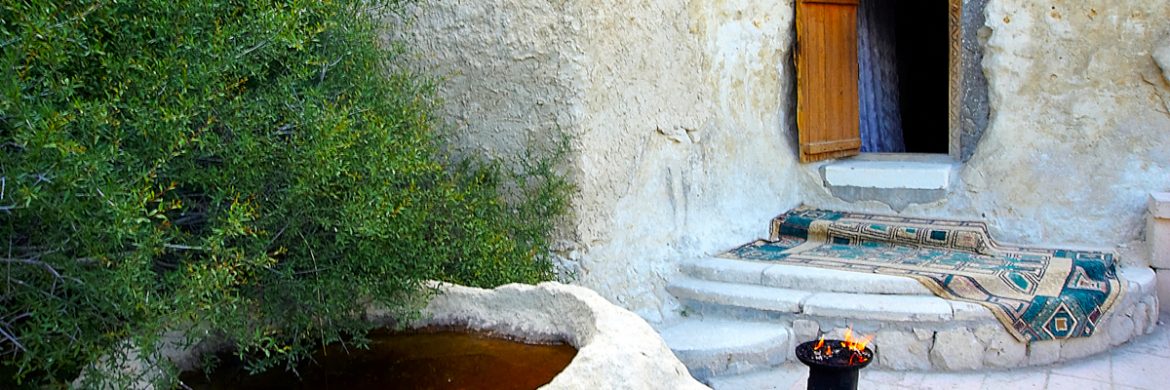The necropolis and the underground mosque of Shopan-Ata are among the sacred places that people visiting Mangystau make a pilgrimage to. It serves as an exemplary representation of Sufi architecture.
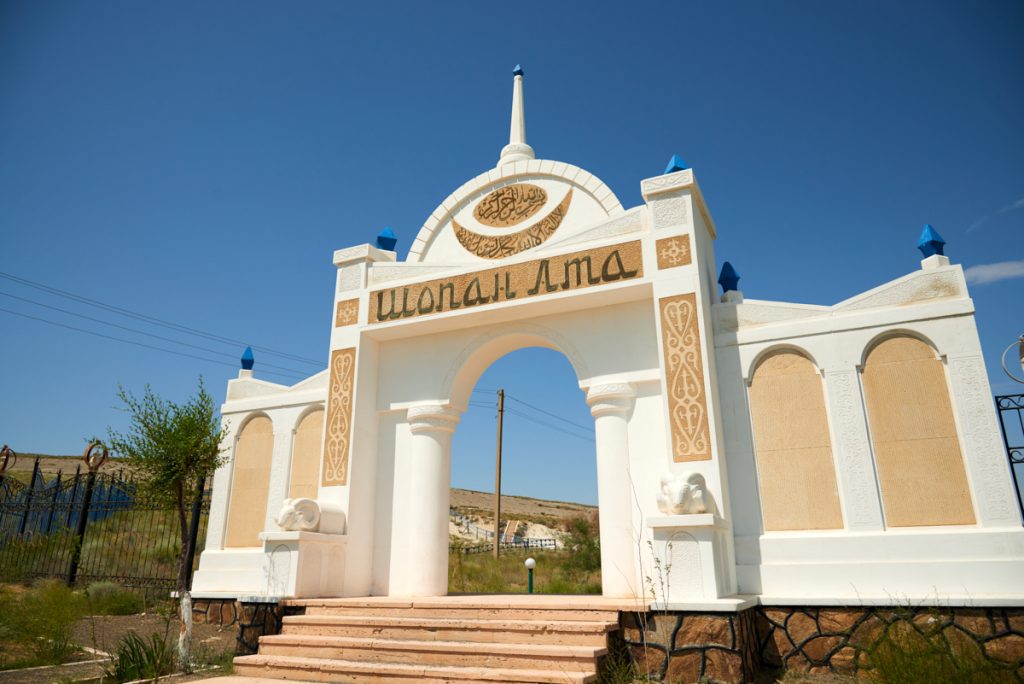
Located 20 kilometers northwest of the village of Senek in the Karakiya district of the Mangistau region, the site lies along the Khorezm caravan route. The cemetery houses various monuments, such as ancient fences, tombstones, and boulders, which are characteristic of medieval Turkmen and Kazakh culture. Carved into the rock, the mosque consists of 12 interconnected small rooms, each serving different purposes. One room is dedicated to religious ceremonies, another to teaching children, and a third to household needs. The large hall of the mosque, measuring 7.1×5.1 meters, receives natural light through a one and a half-meter hole drilled in the ceiling. In the center of the room, there is a sacred spot where a tree measuring 1.5-1.8 meters in length is placed. Shopan-Ata’s grave lies deep under the left wall, while two graves near the exit door belong to his daughter and wife. Additionally, two spacious rooms for pilgrims are carved from the southern and western walls of the central hall. In the mosque courtyard, there is a well and a second mosque that was built at a later time. A massive mulberry tree grows near the entrance, and locals believe that circling it three times can cure all diseases. There are other burials located eastward of the tree.
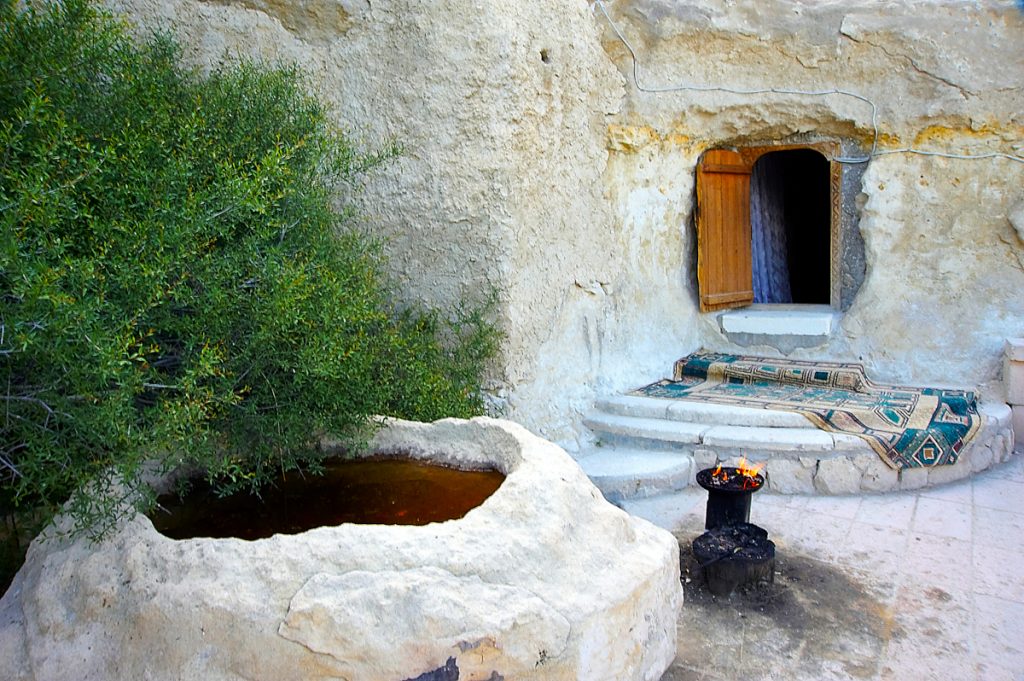
According to legends widespread throughout the country, Shopan-Ata was a revered holy man and a disciple of Khoja Ahmad Yasawi, as well as a mentor to Beket-Ata. He spread the teachings of Sufism in the Mangistau region at the direction of his teacher.
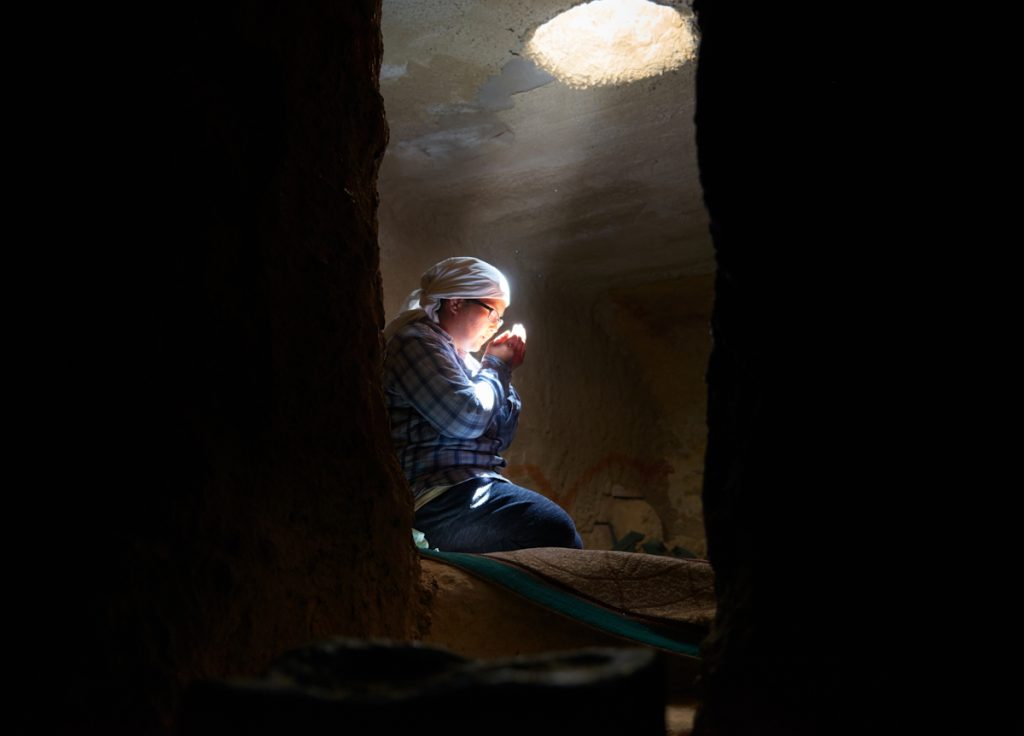
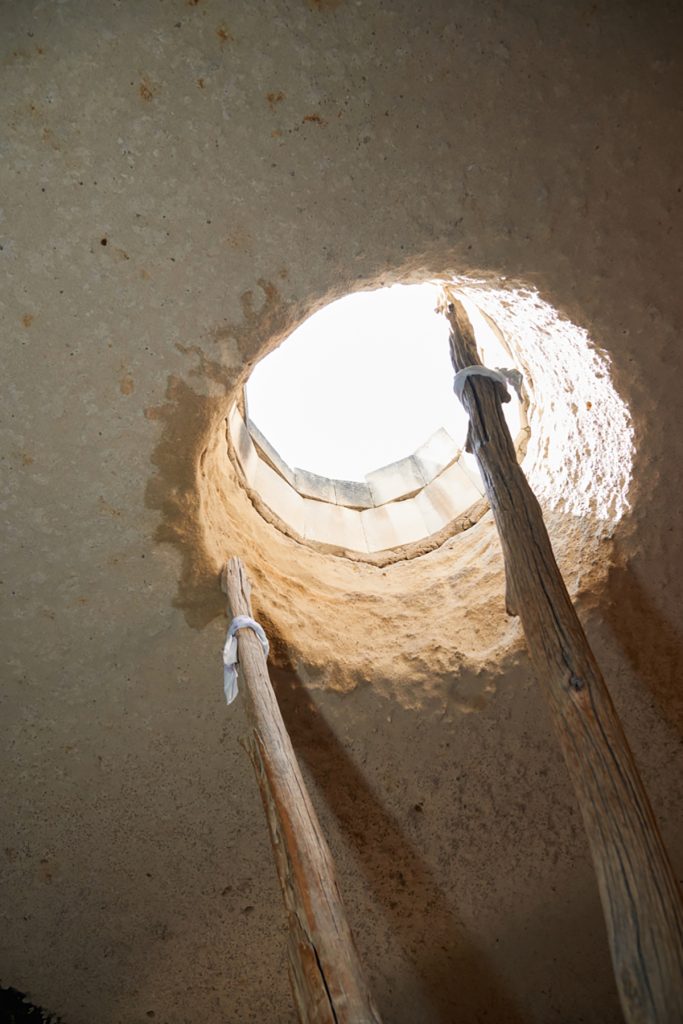
As the legend goes, after completing their studies with Khoja Ahmed Yasawi, he gathered his students and instructed each of them to shoot arrows through the shanyrak, a wooden hole in the yurt. Their mission was to travel to the places where their arrows landed, preach Sufism, and construct new mosques. Shopan-Ata’s arrow hit the Mangistau steppe, which is where he was destined to build the mosque.
At that time, the land on which the mosque stands belonged to a wealthy landowner named Bayan. Shopan-Ata, who had come to build the mosque, agreed to take care of Bayan’s sheep without payment. In return, Bayan promised to compensate him for every white sheep born. However, Bayan cunningly evaded fulfilling his promise, despite a whole herd of white sheep being born. Becoming even more greedy, Bayan declared that he would pay Shopan-Ata the next year only if a black flock was born. Much to his amazement, history repeated itself, and indeed, a black flock was born. Finally, Bayan realized that Shopan-Ata was no ordinary person and offered him all of his belongings. Some legends even claim that Bayan gave his daughter to Shopan-Ata.
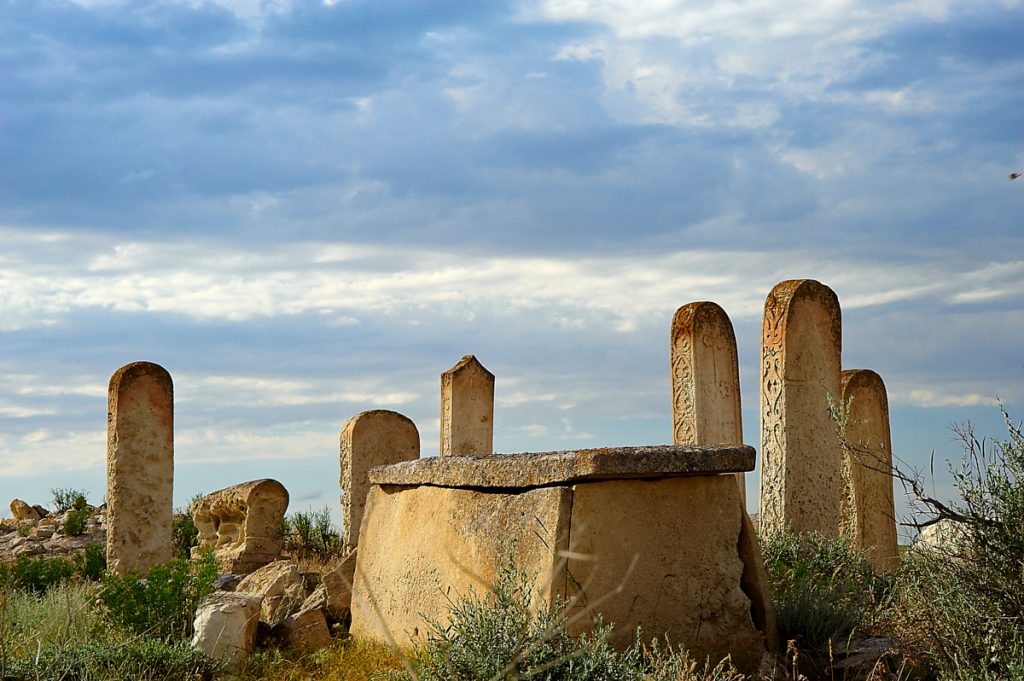
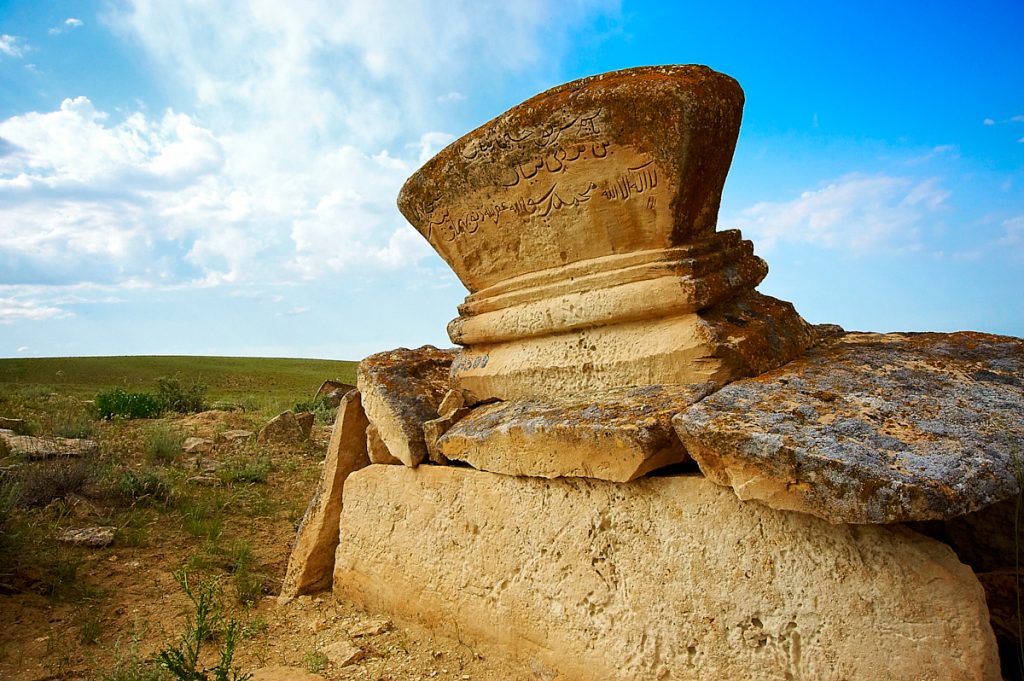
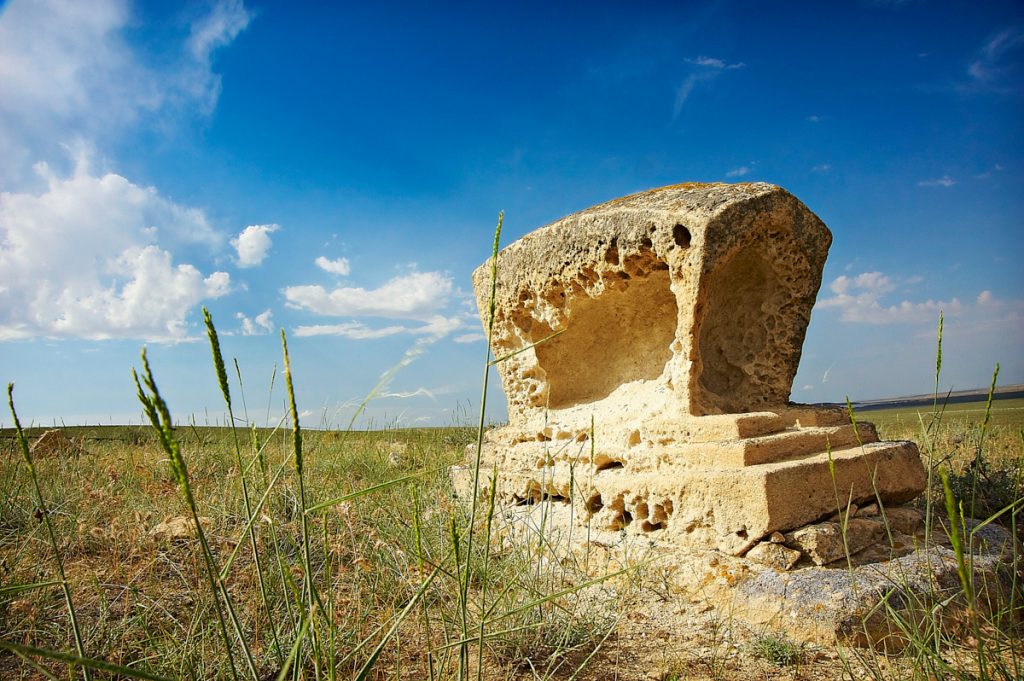
The Shopan-Ata mosque attracts numerous pilgrims from all over the world, and its name is renowned throughout the country. The tradition of starting the journey to the famous holy underground mosque, Beket-Ata, with a visit to the Shopan-Ata cemetery has been followed for a long time. According to legend, while Beket-Ata spent the night in his mosque, he dreamt of Shopan-Ata, which foretold the construction of a mosque.



